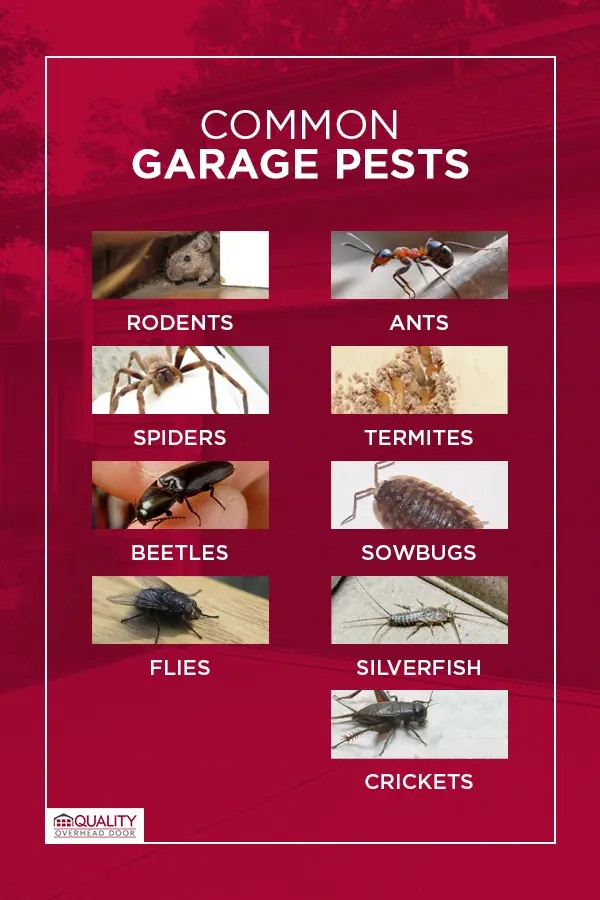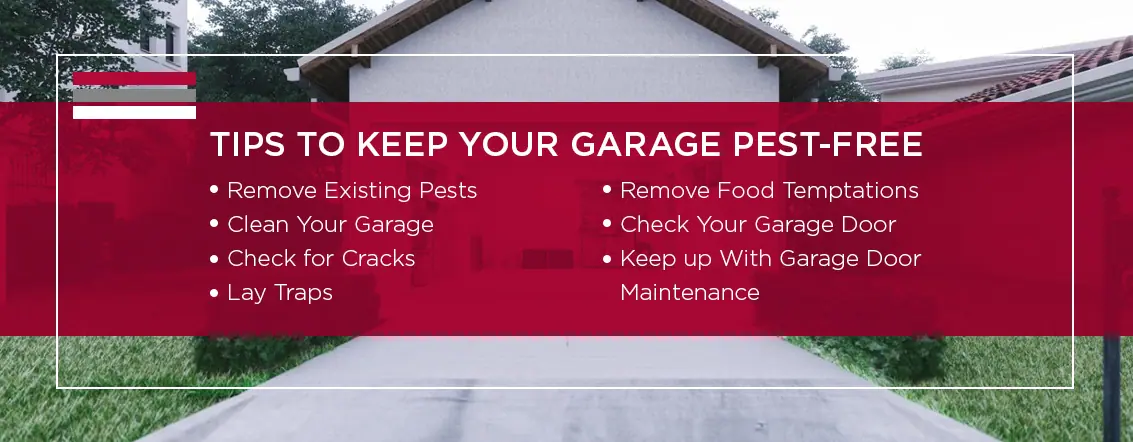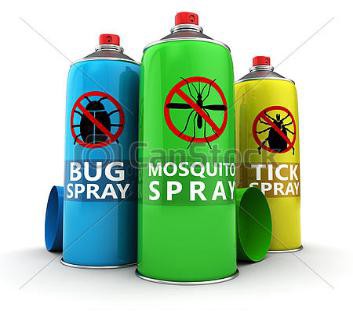Insecticide For Garage
Most people have encountered an insect, rodent or other pest in their garage at one point or another. Have you ever wondered why bugs seem to love garages so much? Chances are, it’s for one or more of the following reasons:
- Garages offer protection: Your garage offers bugs and pests protection from dangers like summer heat, frigid winters, severe or inclement weather, natural predators and more. Pests may also seek protective shelter in your garage if their outdoor home has been destroyed.
- They simulate a bug’s natural environment: Many bugs are drawn to garages because they remind them of their natural habitat: moist, dark and warm with plenty of materials and debris to burrow and nest in.
- Pests are attracted to smells: Your garage can be a source of many tempting smells for bugs and pests, including sweet scents from food products, plants, spillage, stored grains, animal food or birdseed. Some pests are attracted to less pleasing smells, like garbage, blood and sweat.
WHY IT’S IMPORTANT TO ELIMINATE PESTS IN YOUR GARAGE

Bugs and rodents are more than just a nuisance — they can also be dangerous. Some pests can cause great damage to your belongings or the structure of the garage. They can even use the garage as an easy way to enter your home. Some pests, like rodents and flies, can also spread harmful bacteria and diseases. For these reasons, the prompt elimination of pests is crucial.
COMMON GARAGE PESTS

There are several different species of bugs or types of pests that can pose a threat to you and your garage. However, the following are among the most common garage bugs and pests.
1. RODENTS
According to one survey, 37% of Americans saw a rodent in their home in 2017. Of that 37%, 39% saw the rodent in their garage. Rodents include mice and rats and are among the most dangerous garage pests because they can spread fleas and mites, chew and burrow into your belongings and seldom arrive alone. According to the Centers for Disease Control and Prevention (CDC), rodents can also spread over 35 diseases worldwide.
2. ANTS
Identifying the ant in your garage is the first step to eradicating the issue. The three types of ants most commonly found inside homes and garages are:
- Carpenter ants: Carpenter ants excavate wood and nest inside structures, which can cause lasting damage to areas in your garage, like shelving.
- Odorous house ants: These ants do not necessarily pose a threat to you or your home, but colonies nest under debris and wood, which many homeowners find bothersome.
- Pavement ants: Pavement ants have a stinger and often feed on food items. They mine into the pavement and concrete, including garage floors.
3. SPIDERS
Spiders often retreat into homes and garages in the late summer and early fall, as temperatures begin to shift outdoors. Numerous different types of spiders can enter your garage through cracks or when your garage door is open. They build unsightly webs on the ground and in ceiling corners. Although most household spiders do not bite, most homeowners do not want an infestation on their hands.
4. TERMITES
According to the CDC, termites are among the most destructive household pests in America and are responsible for billions of dollars of damage per year. Termites break down and consume more than wood — they are are also often responsible for damage to cardboard boxes, fiberboard, paper products, furniture and more. They usually enter your garage at vulnerable areas, like where wood siding meets the ground or where moisture collects near your foundation.
5. BEETLES
There are roughly 30,000 different types of known beetles in the United States. Beetles enter your house or garage through packages, firewood or other natural materials stored indoors or even potted plants. Though beetles are harmless for the most part, they can pose a significant threat to any stored food products you keep in your garage, including grains, dairy, meats, boxes of cereal and more. They have also been known to eat fabric, wood and plants.
6. SOWBUGS
Sowbugs enter your garage through unsealed structural cracks and thrive in dark, moist environments. Sowbugs pose virtually no threat to you, your home or the items stored in your garage. However, many find their presence alone to be a nuisance. Unless they can establish a nest in a consistently damp area of your garage, they should not live very long. To help eliminate the risk of sowbugs, make sure your garage is properly ventilated, and there is no standing water.
7. FLIES
Because many flies feed on garbage, waste and rotten food, they are often known to carry sickness-causing bacteria and disease, including:
- Typhoid
- Anthrax
- Salmonella
- Cholera
- Tuberculosis
Flies in garages are often drawn to overflowing or empty, soiled trash cans. They can also fly into your garage through unsealed cracks or anytime the door is open.
8. SILVERFISH
Silverfish are attracted to moist environments, including damp fabrics and paper products. Because of this, they pose a significant threat to wallpaper, books, insulation and even packaged food products. Additionally, some people may be allergic to silverfish scales. Silverfish are good at hiding, so it’s important that you know the signs of an infestation, which include:
- Holes, notches or scratches on items or surfaces, which could be feeding marks
- Yellow stains or scales
- Black pepper-like feces
9. CRICKETS
Once a cricket or infestation of crickets takes hold of your garage or home, it is challenging to get rid of the problem. In addition to loud chirping noises at all hours, crickets have also been known to chew through loose fabrics. Crickets can lay hundreds of eggs at a time, so prompt elimination is crucial to avoid a full-on cricket infestation. Crickets are drawn to warm, moist areas, so doing your best to eliminate these conditions in your garage will help prevent an uncontrollable infestation from taking hold.
TIPS TO KEEP YOUR GARAGE PEST-FREE

Keep reading to learn more about how to keep bugs out of your garage.
1. REMOVE EXISTING PESTS
Before you can take steps to ensure a bug-free garage, you need to start by making sure your garage is currently free of all pests.
- Examine your garage: Examine all parts of your garage, including behind and under shelving, flooring, ceilings, near boxes or other stored items and more. As you examine your garage, look for signs that might indicate a possible infestation, like chew or scratch marks, holes, abandoned carcasses or shells, nesting piles or other damage to your belongings.
- Identify and research found pests: If you find a bug or signs of an infestation, do your research and try your best to identify what kind of pest you are dealing with. This will make it easier to narrow down the proper extermination method and will help you know what other areas of our home to check just in case the infestation has spread.
- Have all existing pests or infestations removed: Finally, eliminate existing pests with pesticides, traps or by consulting a professional pest management company.
2. CLEAN YOUR GARAGE
Bugs love mess and clutter, so cleaning your garage is the first — and one of the most important — steps of preventing pest infestation.
- Keep it dry: Find any damp or wet areas and take steps to repair whatever has caused the dampness. Then, dry standing water with a towel or small portable fan. Make sure your garage is properly ventilated to promote healthy airflow and limit moisture-causing humidity.
- Remove all debris: Insects build nests and hide in clutter or debris, so remove all unnecessary items from your garage. Sweep and mop your floors to eliminate any residue that could attract bugs. Secure all food products or other vulnerable items in enclosed, airtight storage.
- Seal garbage: If you store any garbage in your garage, do not leave it out in the open. Cover cans with lids and remove trash bags as they get full. Never leave full bags of trash or open, overflowing cans exposed.
3. CHECK FOR CRACKS
The best way to stop pests from inhabiting your garage is by preventing them from getting in. Check for any cracks in the following areas, and seal with silicone caulk:
- Foundation:Pay special attention to the floor, where garages often see lots of cracks and holes that pests love to take advantage of whenever they can. You should also check the exterior foundation of your garage for any damage.
- Walls: Cracks and holes in your garage walls — even small, hardly noticeable ones — can be an open invitation for pests to enter.
- Ceiling: Use a ladder to carefully perform a visual inspection of your ceiling for any damage, including leaks.
- Windows: Check windows, window screens and window panes for any holes or gaps.
4. LAY TRAPS
Aside from contacting a professional pest management company, you have two main options for removing pets from your garage: pesticides and manual traps. Lay manual traps — including ant catchers, fly strips or mouse traps — throughout the garage to catch any pests that make their way in. Don’t forget to change the traps regularly.
Spray a non-toxic pesticide around doors, windows, walls and the garage door entrance. You must choose a pesticide that is not harmful to breathe in, and always ventilate the garage as you spray these chemicals.
5. REMOVE FOOD TEMPTATIONS
Food and food products are a big part of why many pests, especially rodents, enter your garage. If you need to know how to keep mice out of your garage, for example, your first step should always be to eliminate any food temptations. Naturally, you’ll want to sweep up any food lying around, but you’ll also want to make sure there are no other possible food lures, such as:
- Stored food: If you store any food or pantry items in your garage, make sure they are securely sealed in an airtight container.
- Your grill: If you plan to store your grill in your garage, make sure you thoroughly clean and dry it before doing so to keep food smells and residue from attracting bugs or rodents.
- Pet food: Pet food and birdseed can often be as tempting to pests as human food. Seal all animal food in secure containers and keep them closed when not in use.
6. CHECK YOUR GARAGE DOOR
For a bug-proof garage, take a good look at your garage door. Garage doors can serve as a powerful tool for keeping pests out, but only if they are correctly maintained. Check your garage door for the following concerns:
- Proper closure: Does your garage door close completely and without any gaps? A garage door that does not seal the room when closed does very little to prevent bugs from flying or crawling inside.
- No cracks: Make sure your garage door is not cracked or otherwise damaged.
- Insulation: To help keep bugs out of your garage at night, check that all insulation and weather stripping is intact and not leaving any room for pests.
- Windows: If your garage door has any windows, check that they are adequately sealed, damage-free and closed.
7. KEEP UP WITH GARAGE DOOR MAINTENANCE
If you follow these guidelines, you should be on your way to a pest-free garage. If you are unsure if your garage door is the source of your infestation, it’s a good time to perform a routine maintenance check. Regular garage door maintenance is important anyway to keep your garage door running smoothly.
Routine garage door maintenance includes:
- Regular inspection: Perform regular visual and audible inspections of your door’s operation. Visually inspect for cracks or gaps that might need to be repaired or sealed. Audibly, listen to see if your door is operating as usual or if it sounds clunky or abnormal.
- Keep it clean: You should regularly clean your garage door, including wiping away any debris or dirt that builds up over time. If you allow dirt to build on your garage door, window or door opener, it can impact door performance and lead to costly damages.
- Functional opener: Make sure your garage door opener is functioning correctly at all times and that you occassionally lubricate all moving parts of your door. A malfunctioning garage door opener may allow bugs or rodents to come inside.
- Contacting the professionals: It is important that you perform regular inspections of your garage door throughout the year. However, you should also know when to contact a professional door servicing company, like Quality Overhead Door. We can help you keep up with your garage door maintenance, including sealing and weatherstripping, and we can repair more serious concerns to keep pests from entering your garage.
Insecticide For Garage
Garage is the perfect place for insects to live. It is very humid, and there are many places to hide in your garage. You can find different kinds of insects that can cause damage to your belongings and even spread diseases. The best way to get rid of these insects is by using insecticides for garage.
An insecticide for garage should be able to kill all kinds of insects that may invade your garage. It should also be safe for use around children and pets, so you do not have to worry about them getting sick from exposure. Some insecticides will also repel insects, which means they will not enter into your home or garage in the first place.
List Of Insecticide For Garage
- Ortho Home Defense Insect Killer for Indoor & Perimeter2 with Comfort Wand kills ants, cockroaches, spiders, fleas, ticks and other listed bugs; the formula is odor free, won’t stain, and keeps listed bugs out
- KILLS BUGS INSIDE: Kills those annoying home-invading insects, including ants, cockroaches, spiders, fleas, ticks, scorpions, beetles, silverfish, centipedes and millipedes
- KEEPS BUGS OUTSIDE: Creates a bug barrier that will kill bugs you have and prevents new bugs for up to 12 months (applies to ants, roaches and spiders indoors on non-porous surfaces)
- NO STAINING OR STINK: This spray can be used indoors and out, leaves no residue, and has no odor; people and pets may re-enter treated areas after spray has dried
- WAND MAKES APPLICATION EASY: The Comfort Wand eliminates hand fatigue, and there’s no pumping required, making it easy to spray along your home’s perimeter–indoors and outside
Additional Info :
| Color | White |
| Item Dimensions | |
| Height | 4.88 Inches |
| Width | 12 Inches |
| Length | 8.95 Inches |
| Weight | 0.73 Pounds |
- SNAKE AWAY REPELLENT – The snake repllent contains strong and powerful ingredients that is designed to repel both venomous and non-venomous snakes, such as green snakes, rattlesnakes, copperheads, bull snakes, milk snakes, and etc.
- FAST ACTING LONG LASTING- All snakes are extremely sensitive to smells,the snake repllent starts working immediately through essential oils time-release scent, prevents snakes from entering, nesting and foraging.
- MULTI-USE-Snake repellent does not harm the snakes, and is can be used around pets, people, and plants,put the balls completely around areas you wish to repel snakes, such as around houses, cabins, trailers, sheds, garages, and flowerbeds.
- SAFE FOR PETS & HUMAN -Made with the natural and powerful ingredients from essential oils, the snake repellent provides 100% natural protection.It is safe for use around people, pets, and plants when used as directed.
- EASY TO USE-The instruction is concise, just remove the products and place the snake repellent on the area where the snake’s favorite place or the snake might pass-by.
Additional Info :
| Color | 8 balls/bag |
- Triple trapping power, first the UV light attracts the bug then the fan sucks it in and the sticky glue boards trap it. No Zapper.
- Subtle and stylish fruit fly, gnat and mosquito killer, no more ugly traps, easily place in your home, kitchen or office as a decorative, stylish piece.
- Trap indoors, close to insect-ridden fruit, plants or trash bin, turn off lights for best results.
- Not effective on house flies.
- Easy to use, choose between standard or low speed setting and leave it to work its magic, EPA Est. Numb.:93372-CHN-1
Additional Info :
| Color | Black |
| Item Dimensions | |
| Height | 9.1 Inches |
| Width | 5.5 Inches |
| Length | 5.5 Inches |





